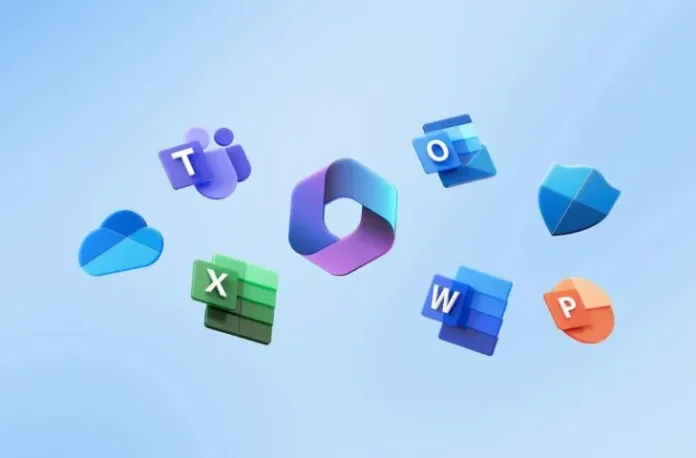The Article Tells The Story of:
- Microsoft quietly rewrites the rules — extending free Microsoft 365 support on Windows 10 beyond the original 2025 deadline.
- Over 700 million users get a shocking three-year grace period, with updates now rolling out until 2028.
- No TPM 2.0? No problem. Millions locked out of Windows 11 can now breathe easy — for now.
- But there’s a catch — limited help if things go wrong, and Microsoft still wants you to upgrade.
Microsoft Confirms Free Microsoft 365 Support for Windows 10 Until 2028
Microsoft has officially extended support for Microsoft 365 apps on Windows 10 until 2028. This surprise move affects over 700 million users still running Windows 10. Previously, Microsoft had set a firm deadline to cut off support for Microsoft 365 apps on Windows 10 by October 14, 2025. Now, users get three more years of free updates for Microsoft 365 on their current systems.
This extension gives users, especially those with older PCs, a major reason to delay switching to Windows 11. Microsoft has quietly updated a support document to reflect this change. The company states that Microsoft 365 apps will continue to receive security updates on Windows 10 until October 10, 2028.
Related:
- Microsoft Publisher Made Easy: A Quick Beginner’s Guide for Professional-Looking Designs Published on May 3, 2025 SquaredTech
- 10 Microsoft Word Hacks You Should Know in 2025 Published on May 1, 2025 SquaredTech
- 10 Microsoft PowerPoint Hacks That Will Instantly Improve Your Presentations Published on May 1, 2025 SquaredTech
Original Deadline Would Have Forced Many to Upgrade
Back in January, Microsoft announced that Microsoft 365 apps would stop receiving support on Windows 10 after October 14, 2025. This deadline targeted apps, not the OS itself. Microsoft had stated: “Microsoft 365 Apps will no longer be supported after October 14, 2025, on Windows 10 devices.” This meant users would have to upgrade to Windows 11 to keep receiving app updates.
The announcement came as part of Microsoft’s push to get users to leave Windows 10. Reports showed that around 240 million users had PCs that could not run Windows 11. Still, hundreds of millions of users had upgrade-eligible PCs but had not made the switch.
At the time, Microsoft maintained that running Microsoft 365 apps on an unsupported OS could cause performance and reliability issues. They emphasized that Microsoft 365 apps were already unsupported on Windows 7, Windows 8, and Windows 8.1. So, the same would happen with Windows 10 once its support ended.
Microsoft Quietly Changes Its Position
Recently, a new support document revealed that Microsoft has reversed course. Microsoft confirmed that it will continue to provide security updates for Microsoft 365 apps on Windows 10 for three more years. These updates will be available until October 10, 2028, and will follow the normal update process.
The change was first spotted by Neowin, which noticed an updated blog post from Microsoft. The blog discussed extended security updates (ESU) for Windows 10 and included a major update: Microsoft 365 apps will keep getting security patches even after Windows 10 reaches its official end of support in 2025.
This update means users can continue using Microsoft 365 apps without worrying about losing protection. Microsoft stated: “To help maintain security while you transition to Windows 11, Microsoft will continue providing security updates for Microsoft 365 Apps on Windows 10 for three years after Windows 10 reaches end of support.”
What This Means for Windows 10 Users
This new deadline is a major shift in Microsoft’s upgrade strategy. It helps 240 million users who cannot upgrade to Windows 11 due to hardware limitations. Many of these users have systems that lack the TPM 2.0 chip required by Windows 11.
With this new support timeline, users can continue working with Microsoft 365 apps on their current Windows 10 PCs without paying extra or upgrading hardware. Microsoft made it clear that the update extension is free and does not require any Windows 10 ESU (Extended Security Updates) purchase.
This three-year extension can also help users avoid buying a new PC just to access Microsoft 365 apps. It is a cost-saving decision and a major win for users with older devices.
Limited Support Still Applies
While Microsoft will provide updates, some limitations remain. Microsoft warns that if performance or reliability issues occur with Microsoft 365 apps only on Windows 10, their support team will recommend upgrading to Windows 11.
In such cases, Microsoft will still try to help, but their troubleshooting may be limited. The company explained: “If the customer is unable to move to Windows 11, support will provide troubleshooting assistance only; technical workarounds might be limited or unavailable.”
This signals that while support continues, the best experience will still be on Windows 11. Microsoft clearly prefers users to make the switch but is giving them more time to do so.
Microsoft May Offer More Concessions Ahead
This move hints at more flexibility from Microsoft as the original Windows 10 support deadline approaches in October 2025. With over 700 million devices still running Windows 10, many expect further updates or support changes to ease the transition.
There is now speculation that Microsoft may extend core Windows 10 security support or offer more free updates. Some users hope this could mean skipping the $30 ESU fee altogether.
The company’s decision to offer free Microsoft 365 app updates until 2028 shows that it is open to changes. Microsoft seems to be preparing for a long period during which many users will continue using Windows 10.
Final Thoughts
Microsoft’s updated support policy gives Windows 10 users more time to switch to Windows 11. The extension of Microsoft 365 app support until October 10, 2028, means users can stay secure and productive on their current devices.
This is especially helpful for users with hardware that does not meet Windows 11 requirements. Instead of buying new PCs, they can continue to use Microsoft 365 safely for three more years.
Microsoft is still encouraging users to upgrade. But with this new support window, users have more flexibility and breathing room to plan their next move. This update is a major win for those sticking with Windows 10 a little longer.
Stay Updated: Tech News


